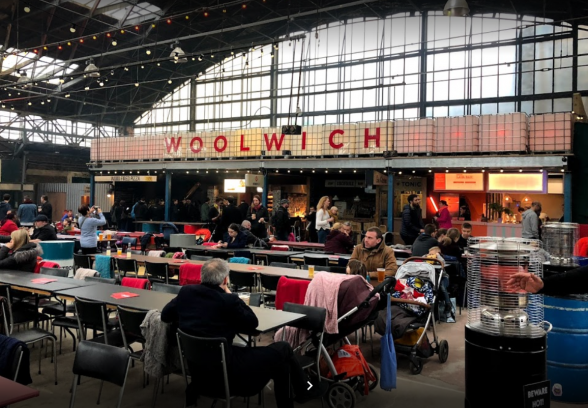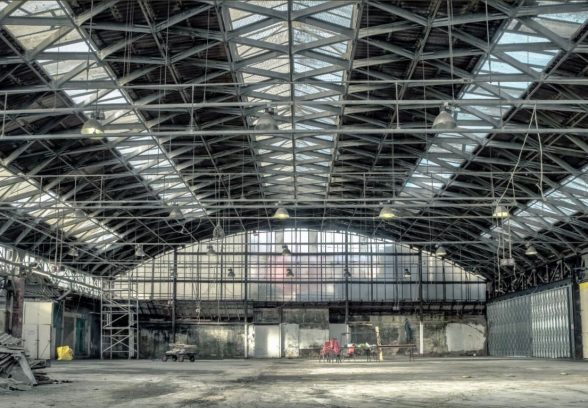This website uses cookies
This website uses cookies to enable it to function properly and to analyse how the website is used. Please click 'Close' to accept and continue using the website.




We are delighted to announce the listing at Grade II of two very different interwar buildings in London, both of which had been threatened with demolition.
The first is the former Woolwich covered market hall, the earliest English example of a Lamella roof structure, a system which allowed the creation of a dramatic, uninterrupted internal space. The second is the Empire Cinema across the other side of London in Westminster, which has been described as the last survivor of the grand palace cinemas in London.
The Woolwich open air market opened in 1932 and was enclosed to become the Covered Market in 1936. The chosen Lamella roofing system came from Germany, and was licensed in England in 1929 by the Horseley Bridge Engineering Company, who, over the course of the following decade, built around 100 Lamella structures in England. Of these, only 16 are known to survive, of which the Covered Market is believed to be the earliest.
The Lamella system was an innovative development in covering large spans, unencumbered by supports, hence being ideally suited for a variety of uses, including factories, garages, workshops, hangars and, more unusually, enclosed markets. The building is therefore a rare example of the structural system, particularly for commercial use. The roof structure as the principle element is also importantly unaltered.
We submitted an application for listing after plans were revealed to redevelop the site. St Modwen and Notting Hill Housing’s Spray Street Quarter Scheme in Woolwich, with architects Panter Hudspith and Glenn Howells, proposed the total demolition of a large site near the Woolwich Arsenal on the Plumstead Road to make way for blocks of residential flats and commercial units.
The application proposed the demolition of most of the market roof in its current form. It put forward several potential options for re-using parts of the roof structure in the new scheme as sculptural pieces. The building had been standing empty for some time, but has recently been repurposed as a popular night time venue by Street Feast.
C20 caseworker Grace Etherington said: “This unique building can only be understood in its original scale, and we are pleased that it has been protected for future generations through listing. Demand for venues such as Street Feast shows that there are options for a permanent viable use which celebrate the building in its original format, and contribute to the local economy and community. The building’s listing offers protection from demolition and alteration, and we hope that the developers take this opportunity to adopt a sympathetic approach to the area’s historic character.”
In its listing recommendation, Historic England states: “The unprepossessing exterior of the market is acknowledged, but is countered by an open-plan interior of impressive scale and form. The Lamella system consists of pressed steel struts bolted together to form a diagonal grid. This simple structure nevertheless has a design quality which contributes to an internal aesthetic, and left exposed, creates this dramatic, uninterrupted internal space which confers special architectural interest”
The listing of the Empire Cinema, formerly the Carlton Theatre, which opened in 1927, followed a high-profile campaign backed by SAVE, C20 Society, the Cinema Theatre Association, Ancient Monuments Society, World Monuments Fund Britain and the Society for the Protection of Ancient Buildings. It was sparked by an application earlier this year by the Crown Estate which would have permitted the demolition of the cinema to make way for an office.
In its citation, Historic England described the Empire Cinema as the sole surviving cinema interior designed by Frank Verity who has been credited with bringing the luxurious cinemas to Britain through his work for the big U.S. Hollywood studio, Paramount.
It is an elegant classical design with Italian and Spanish renaissance influences. Much of its original fabric remains including a fine auditorium, foyer and staircases.

Become a C20 member today and help save our modern design heritage.